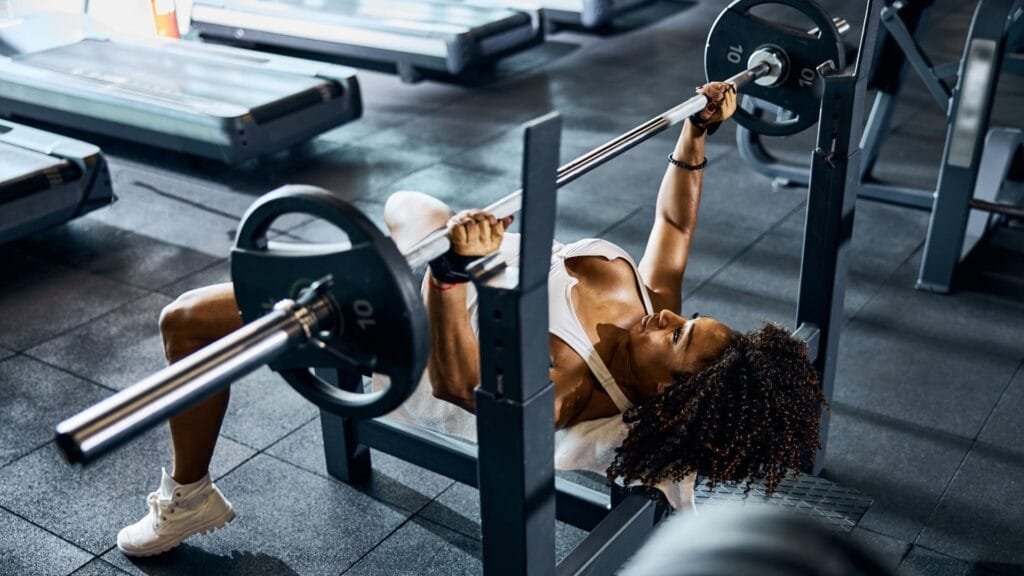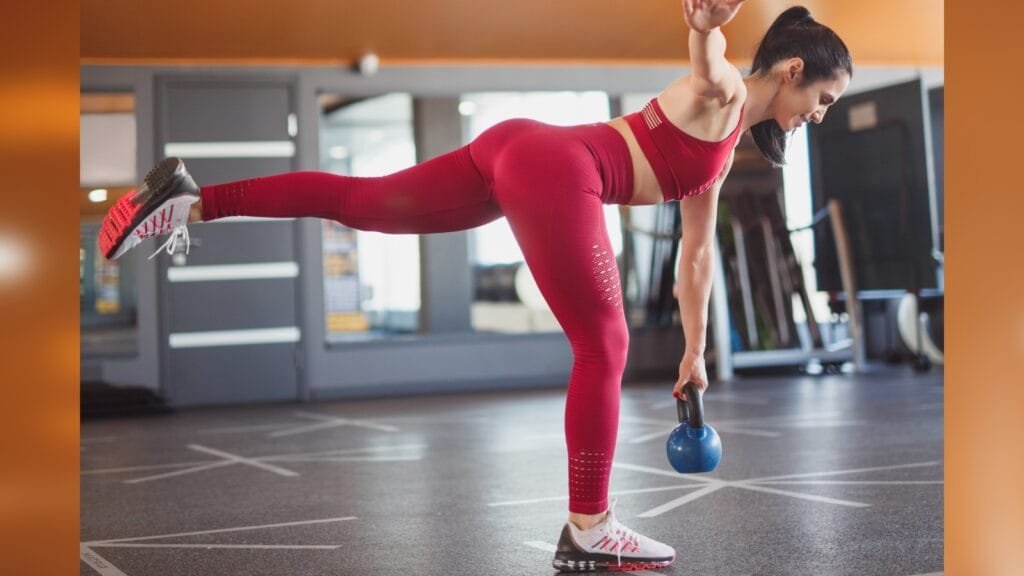In the world of strength training, there are two foundational approaches that dominate most workout routines: bilateral training and unilateral training. These methods not only shape how we approach our fitness goals but also determine how our bodies develop strength, balance, and mobility over time. While bilateral training often takes center stage in gyms worldwide, understanding the role of unilateral training can help you achieve a more well-rounded and functional fitness level.
In this comprehensive guide, we’ll dive into the differences, benefits, and applications of bilateral and unilateral training. Whether your goal is raw strength, improved athletic performance, or enhanced functional movement, incorporating the right balance of these techniques into your routine is essential. Let’s break it down.

What Is Bilateral Training?
Bilateral training involves using both limbs—either arms or legs—to perform a movement simultaneously. Think of exercises like barbell squats, deadlifts, and bench presses. These are staples in most strength training programs because they allow for heavier loads and greater muscle recruitment.
Examples of Bilateral Exercises:
Upper Body Push:
- Barbell bench press
- Overhead press
Upper Body Pull:
- Barbell rows
- Pull-ups or chin-ups
Lower Body Push:
- Back squats
- Front squats
Lower Body Pull:
- Conventional or sumo deadlifts
- Romanian deadlifts
Bilateral training is ideal for building raw strength and muscle mass. When performing these movements, your body’s mechanics rely heavily on generating intra-abdominal pressure. For instance, during a heavy squat, your core stiffens to stabilize your spine, creating a pressure chamber that supports the lift. This stabilization allows you to move heavier weights, making bilateral exercises a cornerstone for developing maximal strength.
However, there’s a downside to solely relying on bilateral training. Repeatedly lifting heavy loads can sometimes lead to reduced range of motion, stiffness, and imbalances if mobility work and variation aren’t included. While bilateral exercises are effective for sports like powerlifting or CrossFit, they may not cover all the functional needs of daily life or athletic performance.
Benefits of Bilateral Training:
- Maximal Strength Development: Allows you to lift heavier weights by using both limbs simultaneously.
- Greater Muscle Recruitment: Engages multiple muscle groups, promoting hypertrophy and strength.
- Time Efficiency: Since both limbs work together, bilateral exercises save time compared to unilateral movements.
- Progressive Overload: Easier to track and progressively load with heavier weights.
When to Use Bilateral Training:
Bilateral exercises are best suited for individuals focused on:
- Building raw strength
- Gaining muscle mass (hypertrophy)
- Competing in strength sports like powerlifting

What Is Unilateral Training?
Unilateral training, on the other hand, focuses on using one limb at a time. This could mean performing a single-leg squat or a single-arm dumbbell press. While these exercises typically involve lighter weights than bilateral movements, they are no less effective. In fact, unilateral training has unique benefits that make it indispensable for improving balance, mobility, and functional strength.
Types of Unilateral Movements:
Rotational Movements:
These involve the torso rotating over the hips, mimicking natural body mechanics seen in activities like walking, running, or throwing. Examples include:
- Single-arm dumbbell press with rotation
- Single-leg deadlifts
Stationary Movements:
In these movements, the torso remains stable while one arm or leg performs the work. Examples include:
- Single-arm dumbbell rows
- Bulgarian split squats
Rotational unilateral movements are particularly efficient because they work with the body’s natural mechanics, recruiting multiple muscles and reducing energy expenditure. For example, when performing a single-arm dumbbell press with rotation, your thorax naturally rotates, creating momentum that enhances movement efficiency. This type of training is especially valuable for improving performance in sports requiring rotational power, like tennis or golf.
Benefits of Unilateral Training:
- Improved Balance and Stability: Forces the body to stabilize itself, addressing muscle imbalances.
- Enhanced Functional Strength: Mimics everyday movements and sports-specific actions.
- Injury Prevention: Identifies and corrects strength discrepancies between limbs, reducing the risk of injuries.
- Maintains Mobility: Promotes a full range of motion, ensuring flexibility and joint health.
- Core Activation: Requires greater core engagement to stabilize the body during single-limb movements.
When to Use Unilateral Training:
Unilateral exercises are especially beneficial for:
- Improving athletic performance
- Correcting muscular imbalances
- Enhancing functional movement patterns
- Preventing injuries
Bilateral Training vs. Unilateral Training: Key Differences
While both bilateral and unilateral training have their place in a well-rounded fitness program, understanding their differences can help you use them more effectively.
| Aspect | Bilateral Training | Unilateral Training |
|---|---|---|
| Strength Potential | Allows for heavier loads and maximal strength development | Focuses on improving single-limb strength and balance |
| Muscle Recruitment | Engages multiple muscle groups simultaneously | Targets specific muscles while improving stability |
| Core Activation | Core stability is important but less emphasized | High core engagement for stabilization during movements |
| Range of Motion | Can lead to stiffness with excessive heavy lifting | Promotes a full range of motion and flexibility |
| Functional Application | Best for powerlifting and strength-focused goals | Mimics real-life and sports-specific movements |
| Injury Prevention | May exacerbate imbalances if not paired with mobility work | Identifies and addresses strength discrepancies |
Functional Training: Bridging the Gap
When discussing bilateral and unilateral training, it’s impossible to ignore the role of functional training. Functional training emphasizes movements that replicate real-life activities, improving strength, stability, and mobility in ways that traditional gym exercises may not.
How Functional Training Incorporates Bilateral and Unilateral Movements:
- Bilateral Functional Exercises:
- Kettlebell swings: Improves power and coordination.
- Medicine ball slams: Develops explosive strength and endurance.
- Unilateral Functional Exercises:
- Step-ups: Mimic climbing and improve leg strength.
- Single-leg balance with kettlebell rows: Enhances stability and core strength.
By combining bilateral and unilateral exercises, functional training ensures you develop a balanced physique capable of handling the demands of daily life and sports performance. For instance, performing a bilateral movement like squats alongside unilateral exercises like lunges helps improve overall strength while maintaining mobility and addressing imbalances.
Benefits of Functional Training:
- Enhances movement efficiency
- Builds practical strength for everyday activities
- Reduces the risk of injury
- Improves coordination and balance
Designing a Balanced Strength Training Program
To optimize your results, it’s essential to integrate both bilateral and unilateral exercises into your routine. Here’s how to design a program that leverages the strengths of each approach:
Sample Weekly Training Split:
Day 1: Lower Body Strength
- Barbell back squats (bilateral)—4 sets of 6 reps
- Romanian deadlifts (bilateral)—3 sets of 8 reps
- Bulgarian split squats (unilateral)—3 sets of 10 reps per leg
- Single-leg glute bridges (unilateral)—2 sets of 12 reps per leg
Day 2: Upper Body Push
- Bench press (bilateral)—4 sets of 6 reps
- Overhead dumbbell press (bilateral)—3 sets of 8 reps
- Single-arm dumbbell press (unilateral with rotation)—3 sets of 10 reps per arm
- Push-ups with rotation (unilateral)–2 sets of 12 reps per side
Day 3: Rest or Active Recovery
- Light stretching, yoga, or walking
Day 4: Functional Training & Core
- Kettlebell swings (bilateral)—4 sets of 15 reps
- Step-ups (unilateral)–3 sets of 12 reps per leg
- Medicine ball slams (bilateral)—3 sets of 10 reps
- Plank with shoulder taps (unilateral)–2 sets of 20 taps total
Day 5: Upper Body Pull
- Pull-ups (bilateral)—4 sets of 6-8 reps
- Barbell rows (bilateral)—3 sets of 8 reps
- Single-arm dumbbell rows (unilateral)—3 sets of 10 reps per arm
- Renegade rows (unilateral)–2 sets of 12 reps total
Day 6: Lower Body & Mobility
- Front squats (bilateral)—3 sets of 6 reps
- Deadlifts (bilateral)—4 sets of 5 reps
- Single-leg Romanian deadlifts (unilateral)–2 sets of 10 reps per leg
- Lateral lunges (unilateral)–2 sets of 12 reps per leg
Day 7: Rest
Tips for Success:
- Warm-Up: Always start with a dynamic warm-up to prepare your muscles and joints.
- Focus on Form: Proper technique is critical for both bilateral and unilateral movements.
- Progressive Overload: Gradually increase weights or reps over time to keep progressing.
- Listen to Your Body: Balance heavy lifting with mobility work to avoid stiffness or injuries.
The Takeaway
Bilateral and unilateral training are not competing methods; they are complementary. To unlock your full potential in strength training, it’s crucial to incorporate both approaches into your routine. Bilateral training allows you to build raw strength and muscle mass, while unilateral training enhances balance, mobility, and functional movement.
When combined with functional training, these techniques create a holistic program that addresses strength, performance, and injury prevention. Whether you’re an athlete, a weekend warrior, or someone aiming to improve daily movement, the key is variety and adaptability.
Embrace both bilateral and unilateral exercises, stay consistent, and watch your strength and mobility reach new heights. Happy training! 💪
- Beyond the Comfort Zone: Embracing the Unknown in Fitness and Life - November 14, 2025
- Why Traditional Gyms Don’t Work (And What Does): The Anti-Gym Revolution - November 14, 2025
- The Art of Rest: Knowing When to Stop and Recover During Training - October 21, 2025

18 Responses